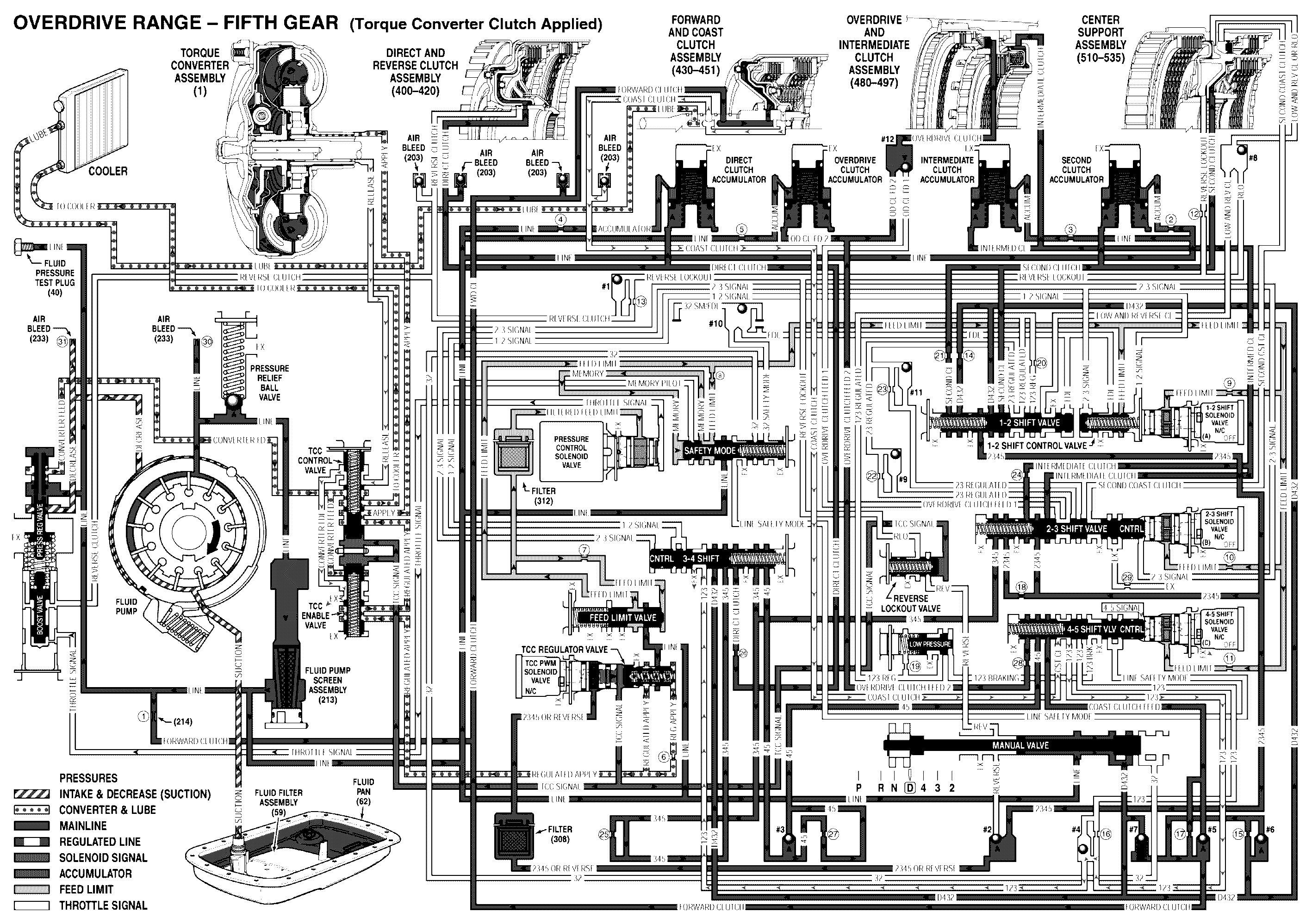For 1990-2009 cars only
When the TCC pressure plate is applied, it is held against the torque converter cover. Since it is splined to the converter turbine hub, it provides a mechanical coupling - direct drive of the engine to the transmission gear sets. This mechanical coupling eliminates the small amount of slippage that occurs in the fluid coupling of a torque converter, resulting in a more efficient transfer of engine torque through the transmission and to the drive wheels.
On:: At this time the Torque Converter Clutch is considered to be engaged - ON.Stage 4:: During this stage, the apply pressure from the TCC Regulator valve is decreased by the TCC PWM solenoid valve duty cycle dropping. Spring force pushes the valve back and reduces the Regulated Apply pressure. This reduces the apply force on the TCC pressure plate to the slip threshold. This gets the TCC pressure plate ready for a smooth release.
Stage 5:: The TCC PWM solenoid valve duty cycle is ramped down through this stage. This action allows the Regulated Apply pressure to start at the slip threshold, and decrease to near "0" pressure over a very short time. The Regulated Apply pressure value from the TCC Regulator valve at this duty cycle should fully release the TCC pressure plate. Slip speed should be at the maximum value.
Stage 6:: The TCM pulses the TCC PWM solenoid valve to a value of "0". Now the TCC Control and TCC Enable valves return to their released positions - away from the spring. Release fluid is now directed back to the torque converter. This stage is designed to move the TCC Control and TCC Enable valves to the released position.
OFF:: At this time the Torque Converter Clutch is considered to be disengaged - OFF.
Overdrive Range, Fifth Gear - Torque Converter Clutch (TCC) Applied

